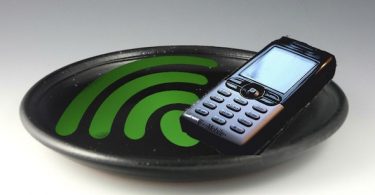Web We Want’s newsletter highlights one important topic and tells you what you need to know in 3 minutes or less.
Women have fewer opportunities than men in most countries. Did you know they also have less Internet access? These two realities are entwined as the Internet becomes ever more important to education, health, jobs, and daily life. If you have less access to Internet, you are simply at a disadvantage, locally and globally. Unfortunately, the gender divide will not disappear on its own — even as more people come online.
Mobile phones have helped bring some Internet to billions of people without computers. But even when women in poor, urban environments have phones, they are up to 50% less likely than men to use them to go online. Mobile data costs too much, and women often lack skills to use the Internet in a way that improves their lives. So why bother?
For all of us, this means that online content by women (and for women) is underrepresented on the Web, and that the Internet has become yet another domain for female oppression — not just by exclusion, but through harassment and sexual violence against women online. We need to counteract these trends with policies, programmes and targets aimed specifically at getting more women online, in ways that are important to themselves and wider society.
Who’s Doing Something?
The World Wide Web Foundation issued report cards this year that assess progress on policies that close the digital gender divide in 10 countries. On the whole, scores are depressingly low, with just 1 in 10 countries scraping by with a passing grade. But good policies can really make a difference, for instance offering digital skills courses for women, or by improving the availability of — and women’s access to — financial services and strong reproductive health info online.
Regarding access to the Internet, India (pdf) and the Philippines (pdf) are two examples of countries that have almost closed the digital gender divide in urban areas, for instance through the Philippines’ commitments to offering free public WiFi and training police to understand cyber-violence.
The Foundation for Media Alternatives in the Philippines is drafting a Philippine Declaration on Internet Rights and Principles to push for legal protections for women’s safety and welfare online as the country prepares a new national ICT plan. Updating human rights language to include Internet privacy and security rights, as well as gender equality, are also key principles of The African Declaration of Internet Rights and Freedoms.
Using social media, women often create women-only groups to support each other professionally, like Kamer Sisters among Cameroonians on Facebook, or Binders Full of Women Writers with a large following in the United States. WhatsApp is also a popular platform as an alternative to traditional websites for small businesses operated by women.
What Should I Do?
Join Take Back the Tech’s annual 16 Days of Activism Against Gender-Based Violence between 25 November and 10 December worldwide.
In your own country, echo the calls of the Web Foundation for governments to REACT — prioritise rights, education, access, content and targets to close the gender digital divide.
Teach women you know how to use the Internet to seek information about health and news, transfer mobile money, and connect with family.
Help get more women online affordably. Explore possibilities to create public or community WiFi networks yourself.



Join the illuminati and be rich and famous WhatsApp/call +2348137089925
[…] dating site. You can find people that are already making use of facebook to meet up with women online. This really is taking place at this time these days, as well as the future of […]
I recently used Decolore for my essay, and the experience was fantastic! Their website, decolore.net, has a sleek and user-friendly blog design that made navigation a breeze. Highly recommend!
Join the illuminati, contact +17754130604 for your initiation
Ready to elevate your gaming and betting experience? Welcome to 24kbet With a diverse range of options including sports betting, casinogames, slots, and even live dealer games, there’s something for every kind of player. Our user-friendly platform, top-notch security, and fantastic promotions ensure that you have a fun and rewarding time.